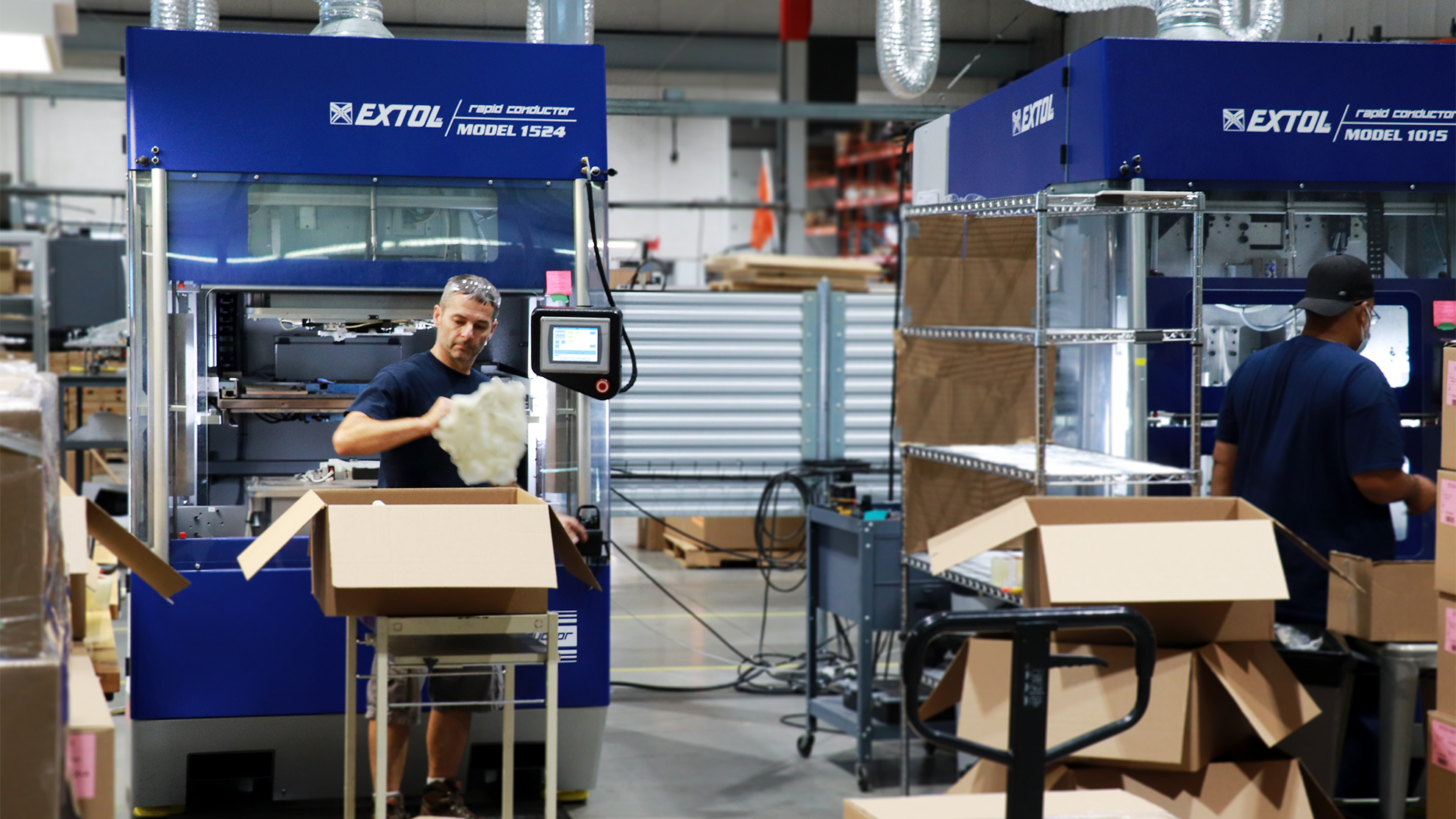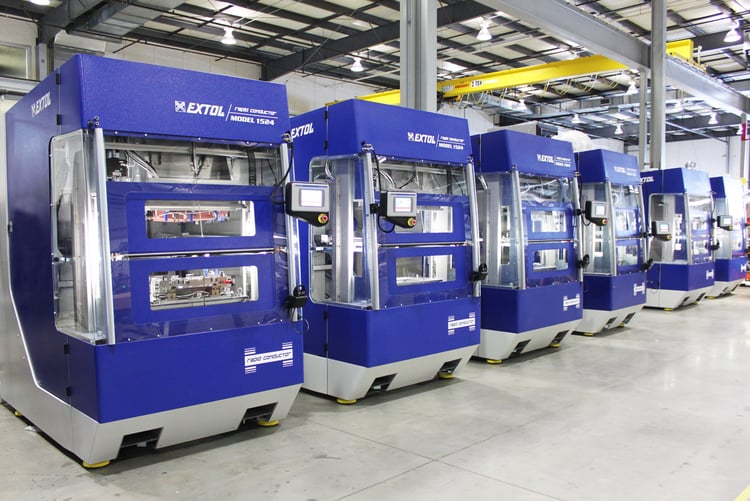Advantages of Servo-Driven Hot Plate Welders
Servo-controlled hot plate welders completely revolutionize the hot-plate welding process. Take it from Extol, we started the servo movement with the Rapid Conductor hot plate welder. Our welders use servo-motors to control the platens and weld strong, repeatable parts.
If you’re not familiar with hot-plate welding, the process is simple. First, two tooling platens bring plastic parts into contact with a hot tool. Then, the heated tooling melts the weld surfaces of the parts. And finally, the hot tool retracts, and the platens press the parts together to form a bond. If you're interested, you can learn more about the process here.
Traditional hot-plate welders use pneumatics or hydraulics to control the platen motion. These welders need mechanical hard stops to set where the parts melt and come together. The ability to set these positions is critical, but hard stops are a pain to adjust. Each move requires manipulating or shimming each hard stop. It’s not precise.
Servo-driven hot-plate welders make everything so much easier. They don't use hard stops to control anything. Instead, all parameters and positions are set through an easy-to-use touchscreen. But servos offer more than just the elimination of hard stops.
Servos are fast. They zip the platens of the hot-plate welder wherever you need them to be. They also give you programmable speed. In a Rapid Conductor, the platens move at 100% speed when making big movements. But when they bring the parts close for melting or welding, they slow down for softer contact.
Servo welders are precise. The platens in a Rapid Conductor maintain a positional tolerance of 0.001". They go to the same programmed spot each cycle. Which means your parts will be the correct height every time.
Servos welders include closed-loop process control. That means that they measure what they do. They go to their set position and measure where they are to make sure they hit the target. They continue this so if an outside force changes something, they still meet their goal.
Finally, Extol’s servo-controlled Rapid Conductors make stronger parts. That's because they let you do something no pneumatic or hydraulic welders can, weld by force. When the melted parts come together, the Rapid Conductor maintains a programmable force. That's called dynamic follow-through and it ensures you produce the strongest parts possible.
So, if you want strong, repeatable parts, get rid of hard stops and start hot-plate welding with servos. Use the Rapid Conductor, the welder that introduced servos to hot-plate welding. It's the best hot-plate welder for speed, precision, and closed-loop control. Learn more about the Rapid Conductor and its capabilities here.


